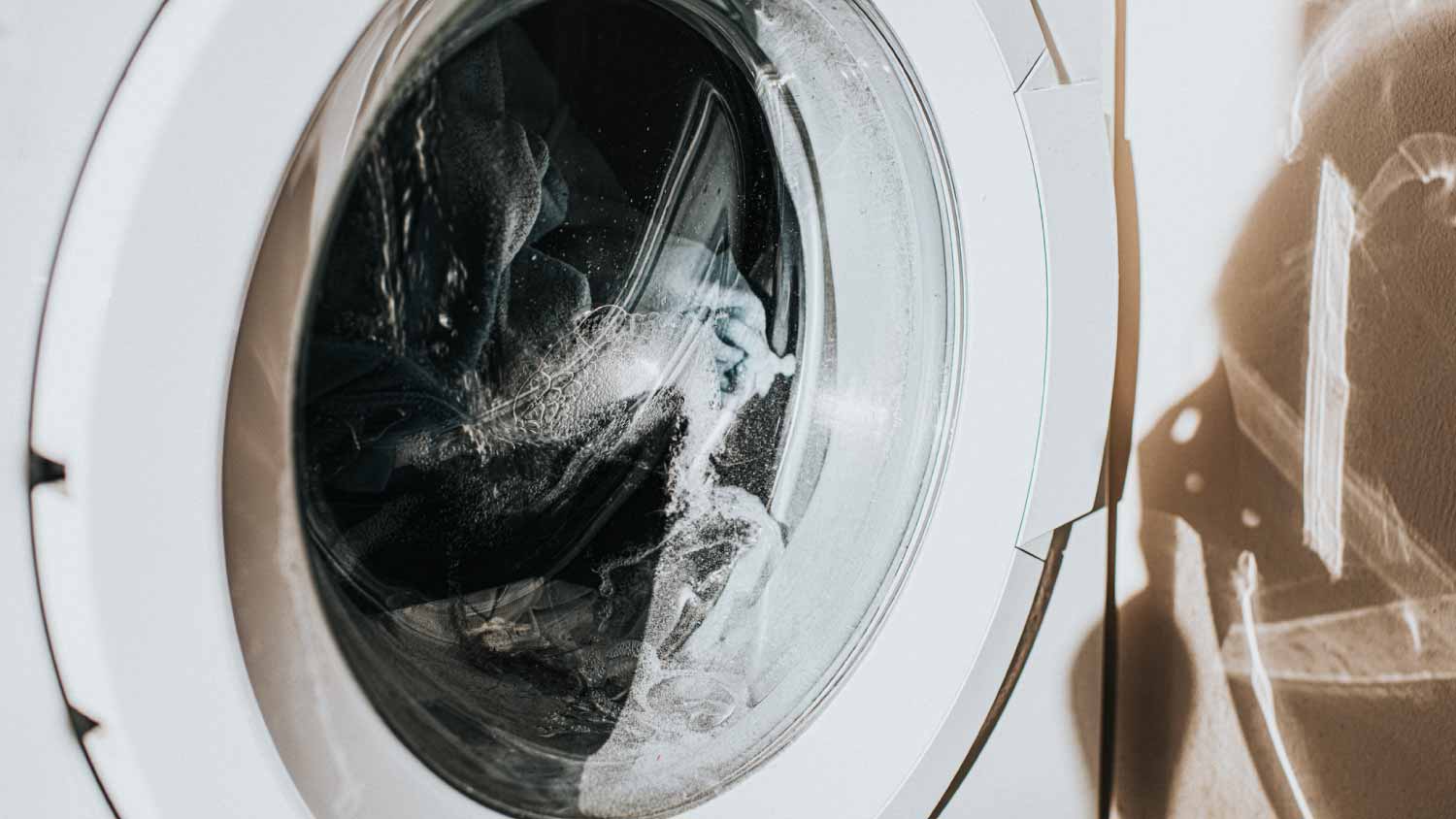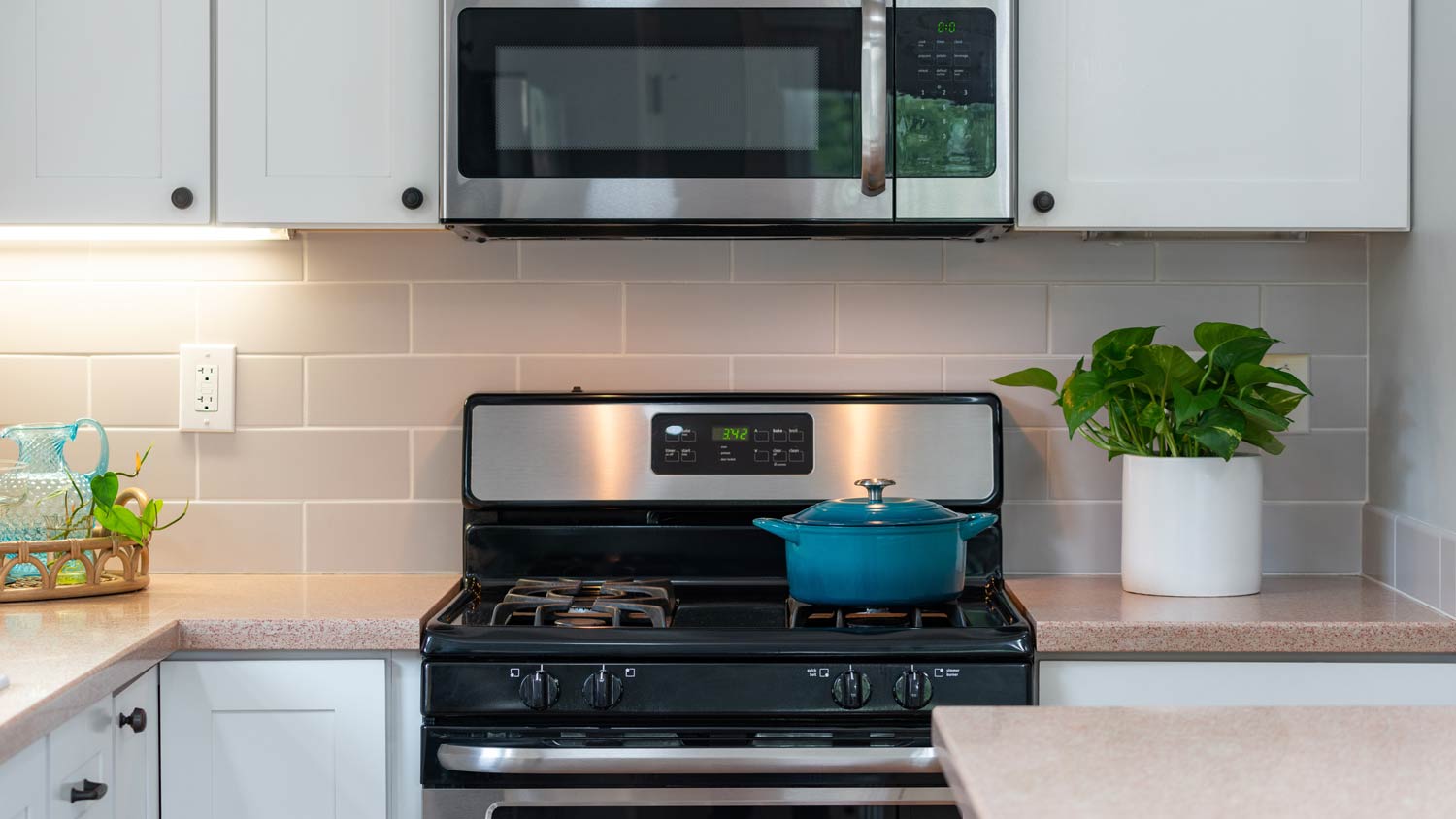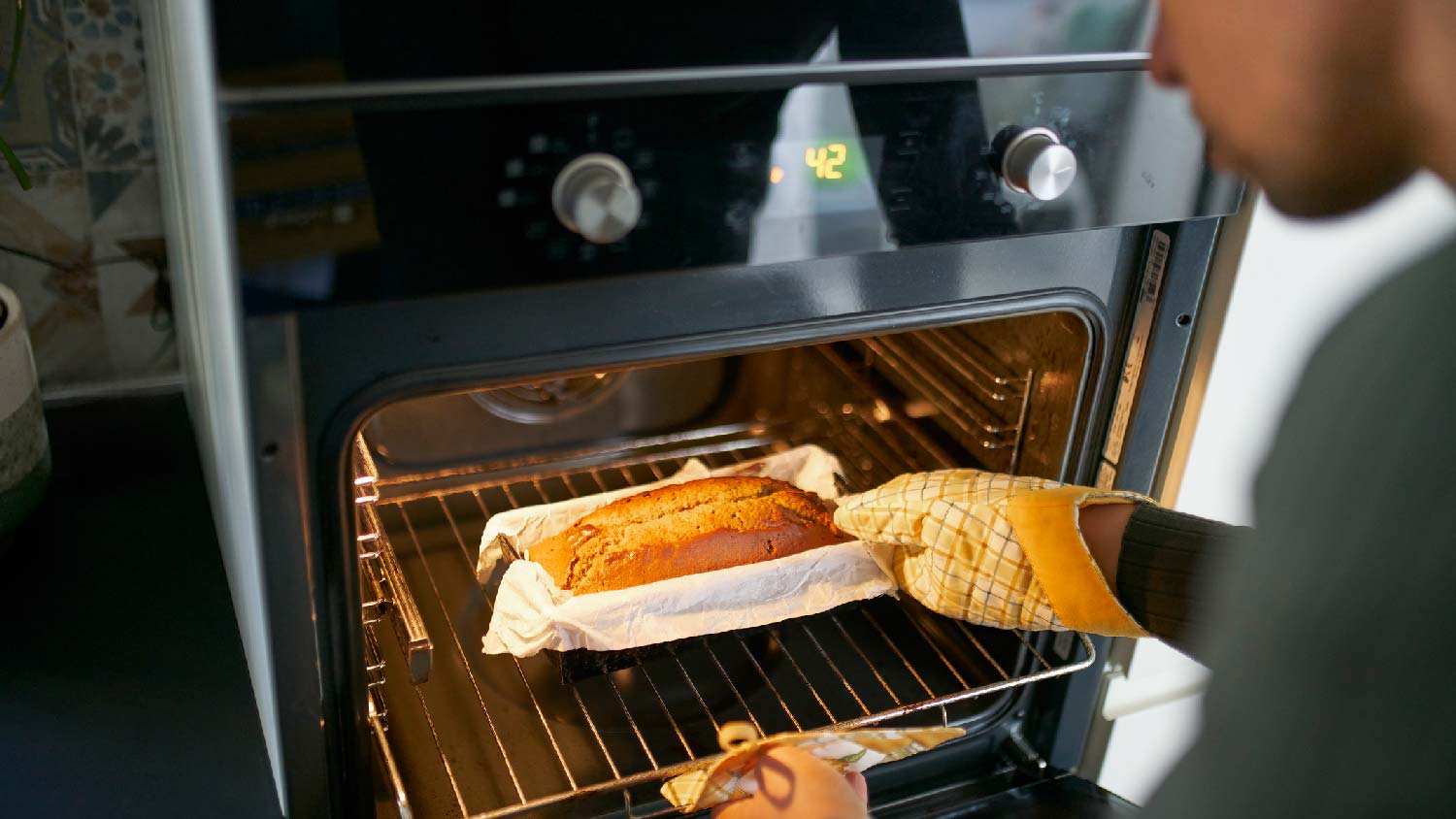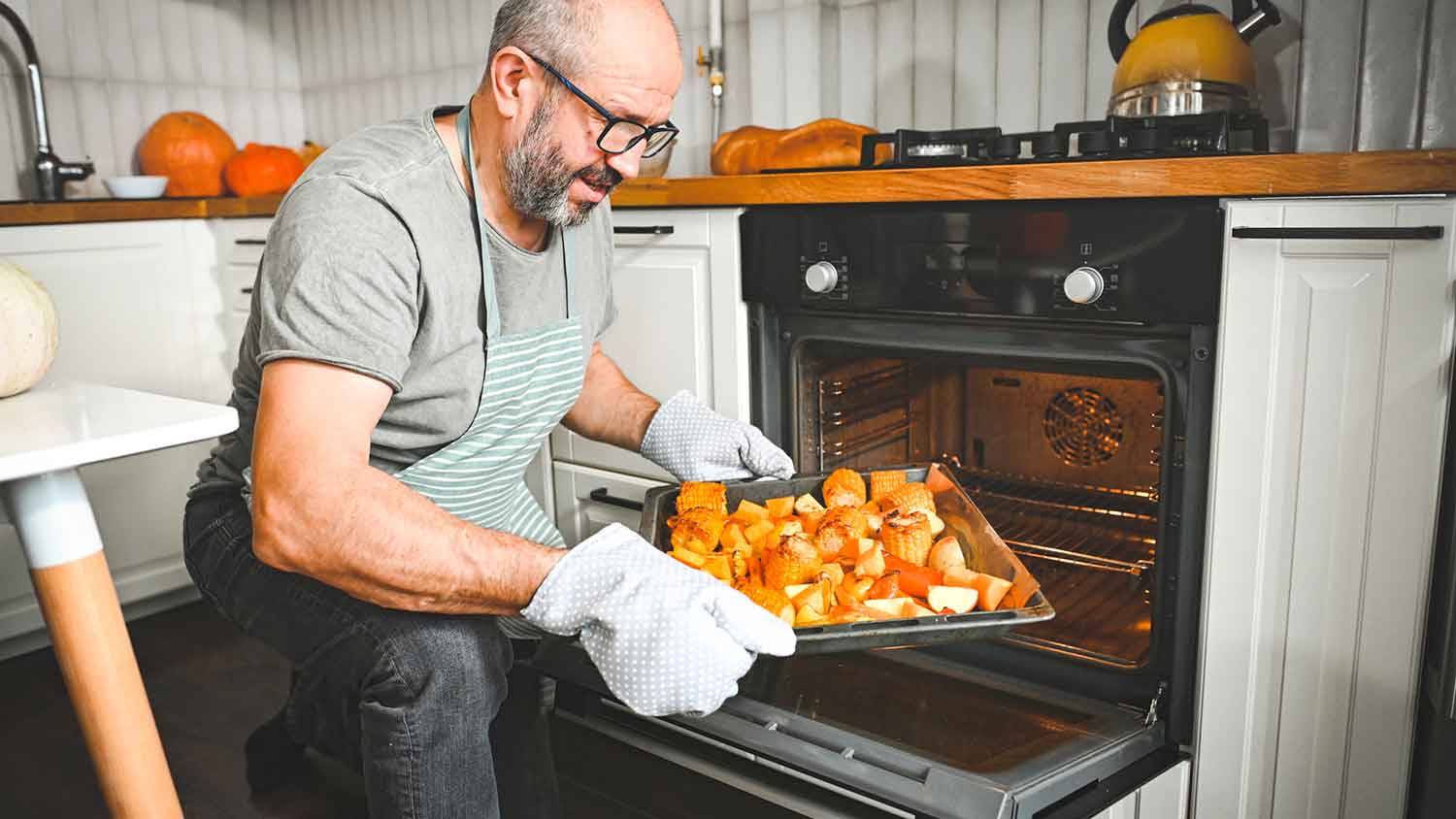How to Remove Scratches From Stainless Steel Appliances in Under 25 Minutes
Keep your stainless steel shining with these easy steps


Sleek, modern, and functional—all the qualities that make stainless steel a top choice for appliances and kitchen accents. Despite all the pros, there’s one con to stainless steel that drives homeowners crazy: scuffs and scrapes. Fortunately, those scratches on your refrigerator don’t have to be permanent (yes, even the deep ones). All it takes are the right tools and a little elbow grease.
With a little help from this guide, you’ll learn how to remove scratches from stainless steel, both fine scratches and larger ones, to make your stove top, sink, and refrigerator door look brand new in no time.
These methods will not work on coated stainless steel. Your stainless steel appliance may be coated if it is not magnetic. To know for sure, check with your manufacturer’s guide.
Why Do I Have Scratches in My Stainless Steel Appliances?

Simply put, regular long-term use of a stainless steel appliance can result in the formation of scratches. A dog that jumps, children that might run with sharp objects (no matter how many times you tell them not to), or even an unfortunate bump of a ring can all make scratches in your stainless steel. And even if you don’t have any of those scenarios, repeated contact with the same surface can cause micro scratches that will take away from the luxurious feel of your appliance.
Stainless steel appliances are fantastic choices for their easy maintenance and versatility, and besides being scratch-prone, they are rather durable. Luckily for you and your kitchen, removing most scratches from stainless steel appliances can be done in a matter of minutes, making them look shiny and new once again.
How to Prep for Scratch Removal From Stainless Steel Appliances
Before getting started with this project, it’s imperative that you consult your user’s manual to understand your appliance’s finish. Kitchen appliances can come in various finishes—shiny, matte, brushed, or even black-painted. Knowing the finish and any buffing precautions can help prevent additional damage.
It’s also worth noting that you should determine the severity of your scratches before trying to remove them. Smaller, finer scratches require different materials to buff out than deeper scratches—use the wrong method, and you might end up with more significant damage than you had to start.
How to Remove Fine Scratches From Stainless Steel Appliances
Use this treatment method on smaller scratches. If these steps don’t work, you may be dealing with a deeper scratch that requires additional treatment.
You’ll need the following materials to get out fine scratches:
Microfiber cloths
Bottle of stainless steel scratch remover solution, like Bar Keepers Friend®
Vinegar
Olive, vegetable, or mineral oil
Whitening toothpaste (optional)
Baking soda (optional)
1. Clean the Scratched Surface
Clean the surface area with diluted vinegar and an unused microfiber cloth to make sure all dust, dirt, food residue, and other stains have been removed. Be sure to completely rinse and dry the surface.
2. Determine the Direction of the Grain
Look closely at the grain of the stainless steel. Notice if it’s going up and down or from side to side. This step is crucial—if you work against the grain instead of with it, you’ll cause significantly more damage than you already have, and this damage will be near impossible to reverse.
3. Work Scratch Remover Solution Into the Scratch
Add a dab of the stainless steel scratch remover solution to a clean microfiber towel. If you do not have access to scratch remover solution, you can also use whitening toothpaste (one that is not gel) or baking soda. If you’re using baking soda, add water until it turns into a paste. Next, rub the solution into the scratch, going in the same direction as the grain of the steel—do not use a circular motion.
If you purchased a commercial scratch remover, such as Bar Keepers Friend® or 3M Super Duty Rubbing Compound®, be sure to follow any additional instructions on the bottle.
4. Let the Solution Sit and Repeat as Needed
Let the solution sit for about 5 minutes before using another clean, damp microfiber cloth to wipe away the excess solution. If needed, repeat steps three through five until the scratch has been completely removed.
5. Clean Up
Once your scratch has been removed, spritz the stainless steel surface with distilled white vinegar and wipe again with a clean, dry microfiber cloth. This will help remove any residue of the scratch solution.
6. Make it Shine
Your last step in repairing your scratched stainless steel appliance is to bring back it’s shine. You can use a few drops of oil you likely have in your kitchen, like olive or vegetable oil, or mineral oil on a microfiber cloth to polish your appliance and bring back its natural shine. Be sure to go with the grain, not against it.
How to Remove Deep Scratches from Stainless Steel Appliances

If the method above doesn’t work on your stainless steel scratch, you may be dealing with a bigger scratch that requires a little extra TLC.
Note: The method to remove deep scratches from stainless steel has the potential to cause more damage if done incorrectly. If you don’t feel confident enough to tackle this job on your own, you may want to hire an appliance repair professional who has experience with the process.
You’ll need the following materials to get out deep scratches:
Abrasive pad or scouring pad, 400 to 600 grit
Several microfiber cloths
Rubbing compound or purchase a stainless steel scratch removal kit, like Scratch-B-Gone™
Vinegar
Cooking oil
1. Clean the Scratched Surface
As with smaller scratches, you will first need to use a clean microfiber cloth to wash the area with diluted vinegar. This will help remove any dirt, dust, and food residue that may have built up on the fridge. Rinse and dry the surface completely.
2. Understand the Direction of the Grain
Look closely at the direction of the grain on your stainless steel surface. It will either be going up and down or side to side. Again, similar to smaller scratches, it’s important to go with the direction of the grain versus against it.
3. Buff the Scratch
Once you know which way the grain is going, apply the cooking oil liberally to an abrasive or scouring pad. With moderate, even pressure, buff the scratch and surrounding area while only moving in the direction of the grain.
4. Check Your Progress and Repeat
After buffing out the area thoroughly, step back and assess the scratch. Repeat step three until the desired look is achieved. Consider moving to a finer grit pad and using more oil or more compound depending on the progress of the scratch.
5. Clean Up
Once the scratch has been removed, use a clean microfiber cloth to buff out the same area. Repeat this step until the oil or compound is mostly gone. Remove any remaining dust and oil with diluted vinegar and a clean microfiber cloth.
6. Make it Shine
Just like with less significant scratches, using a cooking oil, like vegetable or olive oil, can help polish your appliance to bring back its natural shine.
Additional Stainless Steel Scratch Removal Tips
Fixing scratches on your stainless steel doesn’t have to be challenging. Here are a few other tips to try on your appliances:
Can’t find a scratch removal kit? Whitening toothpaste works in a pinch.
Only buff scratches in the direction of the stainless steel grain. Do not buff in a circular motion.
Maintain regular care by keeping your stainless steel appliances clean.
In lieu of olive oil, you can use other cooking oils such as canola oil, vegetable oil, or mineral oil.
Do not use bleach when cleaning stainless steel.
Take a hands-off approach and budget for professional appliance refinishing.
How to Avoid Scratching Stainless Steel Appliances
Stainless steel appliances can scratch easily, but with some preventative care, you can keep these appliances looking like new. You can’t avoid every scenario that would scratch your stainless steel, but these tips below will certainly help.
Don’t Use Abrasive Cleaners or Tools
While it’s important to clean stainless steel appliances and prevent dirt buildup, you need to choose the right cleaners. Always avoid harsh cleaners that contain calcite, silica, or quartz on the label. Stay away from bleach and ammonia as well. These chemicals can wear down the protective film on the appliance.
Similarly, always use soft microfiber cloths and towels to wipe down the appliances. As tempting as it can be to use that old dishrag, your appliances will thank you for opting not to.
Don’t Clean With Hard Water
Hard water can do more than leave unsightly water stains on glasses. Hard water can also leave spots on stainless steel. Stick to using the cleaning solution we mentioned above, and if you can install a water softener, you’ll make cleaning even easier.
Wipe up Dirt and Grime Quickly
The longer you leave stains and dirt on an appliance, the harder it is to clean them up. Once you notice any stains, wipe them away with a soft cloth and an approved cleaning solution.
DIY vs. Hiring a Pro
If you’ve tried the above methods and still have deep scratches, you’ll need to contact a professional to refinish the appliance. Appliance refinishing costs will depend on the type of appliance and the type of paint needed to fix the issues. In general, you can expect to pay anywhere from $150 to $540.
Using epoxy paint is the cheapest option, costing about $5 to $7 per can. For ovens and dryers, you’ll need high-heat paint, which is closer to $10 per can. For the best results, and the highest price, choose electrostatic paint. You can expect to pay $300 for the materials and labor.
If you’re dealing with a dent, though, that’s a separate task for an appliance repair technician. Refrigerator door dent repair costs about $125 an hour for labor. But that price may go up for larger dents or if the technician needs to replace the panel instead.
Frequently Asked Questions
If you have a stainless steel appliance and notice a scratch, your first instinct might be to panic. There’s no need to reconsider your appliance choices—minor scratches are an unfortunate but totally normal part of stainless steel wear-and-tear.
Stainless steel is practically rust-resistant, though if you have many hairline scratches (or a significant deep scratch), it is more likely to become discolored and potentially start to form rust if bacteria gets in the scratches.
Appliances that are smudge-proof stainless steel have a protective clear coating that makes them smudge-proof. Unfortunately, you can’t truly remove a scratch on this surface without also removing that special coating. Your best bet is to let the scratch be or protect it with a small dab of clear nail polish.
You can risk the option of buffing out the scratches, and be very diligent in coating the area you buffed with oil to reduce the dullness. Just know that if you choose to buff it out, there’s a possibility that the spot won’t look the same as the rest of the appliance.





- Appliance Repair Companies
- Washing Machine Repair
- Dryer Repair
- Refrigerator Repair
- Dishwasher Repair
- Oven Repair
- Wood & Pellet Stove Repair
- Freezer Repair Services
- Wood Stove Services
- Gas Stove Repair
- Emergency Appliance Repair Companies
- Ice Maker Repair
- Gas Appliance Repair
- GE Appliance Repair
- GE Refrigerator Repair
- GE Dryer Repair
- GE Dishwasher Repair
- GE Washing Machine Repair
- Samsung Appliance Repair
- Samsung Refrigerator Repair
- Samsung Dryer Repair
- Samsung Washer Repair
- Samsung Dishwasher Repair
- Samsung Oven Repair
- Whirlpool Repair
- Whirlpool Refrigerator Repair
- Whirlpool Washer Repair
- Whirlpool Dryer Repair
- Whirlpool Oven Repair
- Maytag Appliance Repair
- Maytag Refrigerator Repair
- Maytag Washer Repair
- Maytag Dryer Repair
- Maytag Dishwasher Repair
- Kitchenaid Appliance Repair
- Kitchenaid Oven Repair
- Kitchenaid Refrigerator Repair
- Kenmore Appliance Repair
- Kenmore Dishwasher Repair
- Kenmore Washer Repair
- Kenmore Dryer Repair
- LG Refrigerator Repair
- Bosch Appliance Repair
- Kenmore Refrigerator Repair
- LG Appliance Repair Services
- GE Microwave Repair
- Electrolux Appliance Repair
- Electrolux Washer Repair
- Kitchenaid Dishwasher Repair Services
- Wood Stove Inspection
- Dishwasher Installation
- Trash Compactor Repair
- How to Clean Stainless Steel Appliances and Make Them Sparkle
- White Appliances vs. Stainless Steel Appliances: A Complete Comparison
- How to Paint Stainless Steel and Make It Stick
- How To Remove Rust From Stainless Steel: Transform Your Appliances and Cookware
- How to Get Scratches Out of Wood Floors: A Complete DIY Guide
- How to Get Hard Water Stains off Your Stainless Steel Sink—Once and for All
- Black Stainless Steel Sink Pros and Cons: What to Know Before You Buy
- How to Fix Scratched Glass—and When You Should Just Replace It
- Brushed Nickel vs. Stainless Steel Faucets: Which Is Best for You?
- What’s the Difference Between a Composite Sink vs. Stainless Steel Sink?










